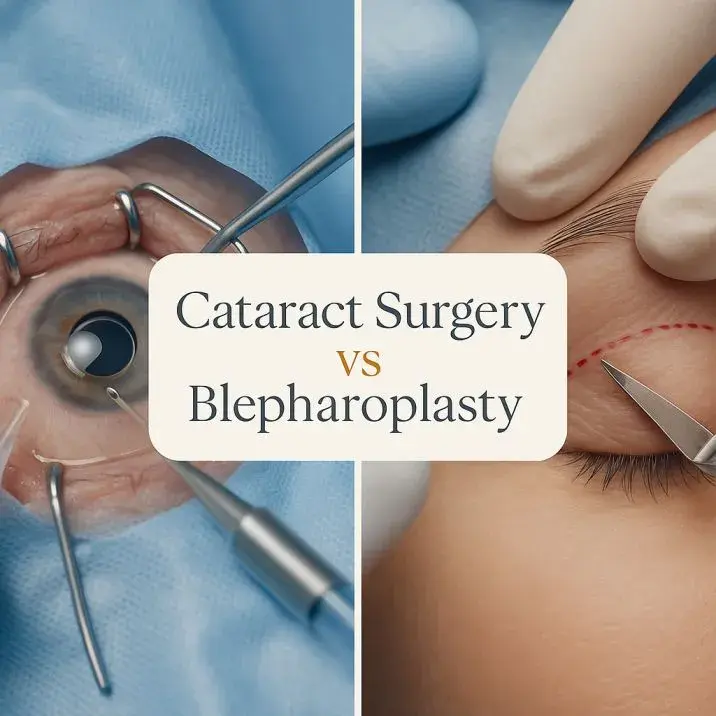5 Common Eye Conditions You Should Know About
- Eyes Defined

- May 8, 2024
- 4 min read
Introduction
Vision is arguably one of our most valuable senses, facilitating day-to-day activities and profoundly impacting our quality of life. However, several common eye conditions can impair vision, ranging from temporary discomfort to permanent vision loss if not appropriately managed. Learning about these conditions can help in early detection and treatment, preserving vision and reducing the likelihood of complications. Below, we discuss five common eye conditions that are important to be aware of.

1. Refractive Errors
Refractive errors are the most frequent eye problems across all age groups. They occur when the shape of the eye prevents light from focusing directly on the retina. The main types of refractive errors include myopia (nearsightedness), hyperopia (farsightedness), astigmatism (distorted vision), and presbyopia (age-related difficulty in seeing close objects).
Myopia: This condition occurs when the eyeball is too long relative to the focusing power of the cornea and lens of the eye, causing light rays to focus at a point in front of the retina, making distant objects appear blurry.
Hyperopia: In contrast to myopia, hyperopia happens when the eyeball is too short, which causes light to be focused behind the retina. This makes near objects more difficult to see.
Astigmatism: This is caused by an irregular curvature of the cornea or lens, leading to blurred or distorted vision at all distances.
Presbyopia: This age-related condition affects almost everyone over the age of 40 and is caused by a gradual loss of the eye's ability to focus on close objects due to hardening of the lens inside the eye.
Treatment for refractive errors includes wearing corrective glasses or contact lenses, refractive surgery, or using lens implants.
2. Cataracts
A cataract is a clouding of the eye's natural lens, which lies behind the iris and the pupil. It is the leading cause of blindness globally, especially in older adults. Cataracts develop slowly and can affect one or both eyes. Symptoms might include blurred vision, fading colors, glare, and difficulty seeing at night.
While the exact cause of cataracts is unknown, factors such as aging, diabetes, smoking, obesity, high blood pressure, previous eye injuries, prolonged use of corticosteroid medications, and excessive exposure to sunlight can increase the risk.
When vision loss interferes with daily activities, cataract surgery, which involves removing the clouded lens and replacing it with a clear, synthetic version, is usually recommended.
3. Glaucoma
Glaucoma is a group of eye conditions that damage the optic nerve, which is essential for good vision. This damage is often caused by an abnormally high pressure in your eye. Glaucoma is one of the leading causes of blindness for people over the age of 60.
It can occur at any age but is more common in older adults. The most troubling aspect of glaucoma is that it typically offers no warning signs or symptoms in its early stages. Once vision loss occurs, it’s permanent. Types of glaucoma include open-angle glaucoma, angle-closure glaucoma, and normal-tension glaucoma.
Regular eye exams can help detect early signs of glaucoma, where treatments can slow the progression of the disease significantly. Treatments generally involve eye drops, medication, laser treatment, or surgery to reduce pressure in the eye.
4. Age-related Macular Degeneration (AMD)
Age-related macular degeneration is a condition in which the macula, the part of the retina responsible for clear vision in your direct line of sight, deteriorates. This disease typically affects older adults and leads to loss of vision in the center of the visual field (the macula). AMD is a leading cause of vision loss among people age 50 and older.
There are two main types of AMD: dry AMD and wet AMD. Dry AMD is characterized by the presence of yellow deposits, known as drusen, in the macula, and is more common but progresses more slowly than the wet type, which occurs when abnormal blood vessels grow under the macula, leaking fluid and blood.
While there is no cure for AMD, early detection and certain treatments can delay its progression. Dietary supplements, anti-VEGF injection therapy to slow the growth of new blood vessels in the retina, and laser therapy are options used to manage the condition.
5. Diabetic Retinopathy
Diabetic retinopathy is a diabetes complication that affects the eyes, caused by damage to the blood vessels of the light-sensitive tissue at the back of the eye (retina). It can affect anyone who has type 1 or type 2 diabetes, with the risk increasing the longer a person has diabetes and when blood sugar is poorly controlled.
Symptoms include blurred vision, floaters, dark areas of vision, and difficulty perceiving colors. Left untreated, diabetic retinopathy can lead to blindness. Early detection and management of diabetes are crucial in preventing this serious damage.
Management focuses on controlling diabetes well but may also include laser treatment, injections directly into the eye, or surgery to reduce the progression of the disease and prevent vision loss.
Conclusion
Eye health is crucial for overall well-being, but common eye conditions can impair your ability to see clearly. Regular eye exams are vital for early detection and effective management of these conditions. Awareness and education about eye health can lead to early intervention, which can dramatically reduce the impact of these common eye problems. If you experience any changes in your vision, consult an eye care professional immediately to discuss the best course of action.




Comments